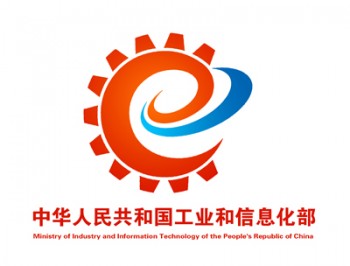Contrary to popular discourse and what some may expect, Chinese national economic plans are fairly transparent. Communist governments are easily assumed as insular and opaque, probably due to historic precedent. Modern China, however, doesn’t suit that description. China’s economy today looks much less like a command-driven economy than it does a modern progressive one, albeit with the ever asterisked “Chinese characteristics”. Some legacies from the communist command economies do remain, such as the five-year economic plans. Incidentally, Chinese aviation recently received a big boost from policymakers when aviation was given special status as a key strategic industry for development in conjunction with the Civil Aviation Administration of China’s (CAAC’s) 12th Five-Year Plan. The Five Year plans are important and fairly explicit in the government’s goals for the national economy, and they are readily available for anyone who wishes to read them. It’s quite transparent.
 The question then becomes, “Ok, so we have a Five Year plan, what about the longer-term plans and strategy?” Again, we still enjoy some transparency in this realm. As was pointed out in this blog earlier, the Chinese government has already stated their intentions for economic priorities and development through the year 2030 in a World Bank document called China 2030 which was approved by China’s National Development & Reform Commission and the Ministry of Finance. When it comes to aviation specifically, another valuable strategic guiding document was released by China’s Ministry of Industry and Information Technology (MIIT) called the Civil Aviation Mid- and Long-Term Development Plan - 2013-2020. This plan details the forward-looking strategy, priorities and goals for China as it seeks to achieve industrialization of its aviation industry by 2020. The document is published in Chinese, so for those who would like the details in English, I took the liberty to review and translate the document so we can discuss it here.
The question then becomes, “Ok, so we have a Five Year plan, what about the longer-term plans and strategy?” Again, we still enjoy some transparency in this realm. As was pointed out in this blog earlier, the Chinese government has already stated their intentions for economic priorities and development through the year 2030 in a World Bank document called China 2030 which was approved by China’s National Development & Reform Commission and the Ministry of Finance. When it comes to aviation specifically, another valuable strategic guiding document was released by China’s Ministry of Industry and Information Technology (MIIT) called the Civil Aviation Mid- and Long-Term Development Plan - 2013-2020. This plan details the forward-looking strategy, priorities and goals for China as it seeks to achieve industrialization of its aviation industry by 2020. The document is published in Chinese, so for those who would like the details in English, I took the liberty to review and translate the document so we can discuss it here.
First it is important to note that the mid- and long-term plan wasn’t developed in a vacuum. The plan references broader development plans that the aviation plan supports and follows. These include China’s 12th Five-Year Plan, the Mid- and Long-Term Science and Technical Development Plan (2006 – 2020), and the “12-5” National Strategic Emerging Industries Development Plan.
The document makes it clear that China understands the gaps it needs to fill to become internationally competitive in the civil aviation industry. Like most modern official Chinese documents it initially pays lip service to communist party ideology and then characterizes the progress of economic and aviation reforms and development as a continuous process since the establishment of the People’s Republic of China under Communist rule. I’ll spare those details.
In one very brief statement, MIIT describes the global aviation industry as fast-paced and accelerating, fiercely competitive, and dominated by monopolies already established in the market.
One of the first tangible issues MIIT’s plan addressed is the issue of civil-military integration. It is an important topic to address because China’s military has historically been extremely hesitant to cooperate with the civilian aviation sector. MIIT’s plan makes it clear that increased civil-military integration is needed in research & development (R&D), resource sharing, and development of the industry. This should come as no surprise since one of MIIT’s primary roles, in fact, is to “promote civil-military integration as well as the coordinated development of advanced technology and industry.” (see US-China Economic and Security Review Commission Report: China’s Defense Industry on the Path of Reform) In addition to increased domestic civil-military cooperation, MIIT also calls for increased international cooperation.
Several development goals were outlined in the plan. Here is a brief summary:
Major Goals
- Perfect modern aviation industry systems
- Enhance sustainable development capabilities
- Make major leaps in civil aircraft industrialization
- Complete C919 development, production and delivery
- Complete ARJ-21 development, production and delivery
- Complete turboprop aircraft development, production and delivery
- MA-60 (50 seat) and MA-700 (70 seat) projects
- Produce rescue aircraft
- 15 medium helicopters
- High end business jets
- Medium-power turbines
- Narrow-body aircraft reach 5% domestic market share by 2020
- Civil aircraft annual sales income to exceed 100 billion RMB
Both the C919 and ARJ-21 programs have been plagued by continual delays, but the projects finally appear to be coming to fruition as final assembly of the first C919 flight test aircraft is underway as of November, 2014. The latest target date publicly announced by COMAC for the first production C919 delivery is 2018…assuming everything goes well during the flight testing and airworthiness certification processes. That’s certainly not a guarantee. On paper China seems to be delivering well on all the above goals, but the 5% market share by 2020 might be a challenge if additional delays continue in China’s civil aircraft development. The following are some key areas MIIT identified as requiring added attention:
Important Areas and Tasks
- Expedite Civil Airliner Production Processes
- Accelerate ARJ-21 development and establish production volume
- Accelerate development and produce MA-60 and MA-700 aircraft to meet short-term market demands domestically and internationally
- Ensure C919 is internationally competitive
- Promptly develop a double-aisle wide-body aircraft to fulfill international hub and intercontinental flight goals.
- Actively Develop General Aviation (GA) Industry
- Develop GA aircraft including:
- Emergency rescue aircraft
- Multi-purpose and specialized aircraft to meet needs of cities
- Helicopters
- Increase quality of products / lines
- Encourage international cooperative development of heavy helicopters
- Accelerate development of modern multi-purpose helicopters
- Business jets
- Make customizable modifications to regional jets
- Encourage international cooperative development of high-end transcontinental business jets
- Expand GA Industry Chain
- Develop GA aircraft and consolidate GA development simultaneously
- Expand GA industry chain
- Promote Independent Development of Propulsion
- Support civil-military integration
- Establish independent aviation propulsion industry/system
- “Reverse the backward situation in propulsion”
- Develop medium-power turbine engine; mass assembly & production in 2015
- Produce a number of mature engine models by 2015
- Produce large aircraft engines within about 10 years
- Promote and support development of small engine market including small turbofan, turboprop and piston engines
- Accelerate Development of Aviation Equipment, Systems and Related Industries
- Avionics development
- Modernization of ATC, navigation, communication, surveillance systems
- Improvements in flight training, maintenance, airport support, other equipment
- Strengthen development of aviation-related materials such as composites, alloys, steels, etc.
- Improve development of onboard computer software and hardware
- Optimize the Layout of the Aviation Industry
- Prevent redundant construction
- Promote healthy and orderly development of the industry
- Civil transport aircraft layout
- Bases to include Shanghai, Shanxi and Tianjin
- GA and helicopters
- Harbin, Shijiazhuang, Zhuhai, Chengdu, and Jingmen as advantageous regions for medium-sized GA, business jet and specialized aircraft development
- Jingdezhen, Harbin and Tianjin as advantageous regions for medium helicopter development
- Encourage development of small light GA aircraft and helicopters
- Upgrade existing medium-sized engine development capacity and encourage small enterprise development
- Vigorously Promote the Progress of Science and Technology
- Key areas where major breakthroughs in engineering and technology are targeted:
- High-precision aerodynamic design
- Composite structure applications
- Flight control technologies
- Efficient engine development
- Energy conservation and noise reduction
- Avionics
- Systems integration
- Operational support and technology
- Strengthen basic research with a focus in following areas:
- Advanced aerodynamics
- Thermodynamics
- Mechanics and flight mechanics
- Ergonomics
- Acoustics
- Propulsion
- Technology
- Information control
- New energy
- New materials
- Other aviation-based science and technology
- Strengthen the technology base and exploration of new technologies
- Promote application of digital technology
- Strengthen Infrastructure and Capacity
- R&D capabilities and test facilities
- Aircraft and engine research
- Testing-wind tunnel, strength testing, engine test stands, etc
- Improve capacity for airworthiness certification & testing
- Improve testing infrastructure
When it comes to China’s civil airliner production, the ARJ-21 is certainly moving forward as a key player in China’s domestic market. However the goal stated above in achieving international competitiveness in the airliner market is probably not realistic with either the ARJ-21 or the C919. Both are heavier, less efficient, and less trusted brands than their global competitors. It will probably not be until after 2020 that China reaches that goal. However, the key issue of developing aircraft to meet China’s own transcontinental demands is very realistic and achievable by 2020. Domestic airlines will be pressured, incentivized, or even strong-armed into purchasing the domestic aircraft and they aircraft will get the job done. At the rate China’s demand for air travel is growing, any aircraft with seats aboard is helpful. And as in all international transactions involving aircraft sales, it doesn’t always come down to which aircraft is actually the best or most fuel-efficient airplane. Politics and negotiations have a large influence over international aircraft sales, so we should expect to see Chinese-built airliners in the international market as well despite their shortcomings.
In GA, China’s worst enemy is its own regulatory environment. Policies inhibit effective use of business, GA and even rescue aircraft across the country. Very low altitude airspace has only opened slightly (up to 1,000 meters), and China’s aviation scene is still inhibited by extreme rigidity in its airspace and other operational regulations. MIIT can call for movement on these tasks, but until MIIT’s friends in the State Council, Central Military Commission, and other government organizations take additional steps to reform aviation policies in China, particularly in the area of airspace control, progress in these areas will be sluggish all the way up to 2020 and beyond. That all said, things are getting better in China, albeit very gradually, and numerous opportunities are found for domestic and foreign interests to capitalize on the upward trajectory of GA in China. Helicopters in particular are a key area of rapid development where China will likely firmly deliver on its stated goals.
Independent aircraft propulsion development is still a challenge for China. Progress hasn’t been as quick as MIIT hoped, but the first signs of quality propulsion technology coming out of China are just now emerging at the Zhuhai Airshow. Joint venturing with foreign firms has been a key priority for China to reach these goals and it seems to be working. Foreign firms understand that by JV’ing in the engine business they are essentially training their future competitors, but the expanding market in China is too lucrative to ignore. Plus, as a general figure, while western leading engine manufacturers are investing as much as a few billion US dollars annually in propulsion R&D, China’s major aircraft engine producer is only spending about $300 million annually. It will be a long while before China reaches the MIIT benchmarks; probably sometime after 2020.
You can see from the sections on organizational layout and engineering priorities that China’s goals are indeed quite transparent when it comes to civil aviation development. The deliberate clustering strategy is an important characteristic of Chinese aviation development that shouldn’t be overlooked. Clustering affords significant competitive and comparative advantages when its done right, and China’s approach to building its capacity for aviation excellence seems to be on the right track. Historically China’s aviation industry was tormented by dozens of separate state-controlled organizations competing against one another across numerous provinces and regions in fairly insular research and development environments. Today China is restructuring its aviation industrial bases and achieving synergies in the process. MIIT’s overview of the major industrial clusters for aviation shows the areas where most of the work, interests, money and support is found in China for each respective aviation segment.
Now on to the major projects:
Major Projects
- Large aircraft projects
- Regional and GA aircraft industrial engineering
- Implement Strategic Emerging Industry Development Plan
- Achieve breakthroughs in key technologies to enhance safety, economy, comfort and environmental protection
- Accelerate regional aircraft development and quality improvement
- Develop GA aircraft, helicopters, trainers, UAVs, simulators
- Large-scale promotion and use of GA aircraft
- Establish maintenance, support, security, training, leasing and other services
- Civil aircraft industrial base support plan
- Create civil aviation equipment and systems integration capabilities
- Provides for industrial development of civil aircraft
- Develop systems integration technologies and core equipment R&D technology
- Encourage enterprises to establish quality control systems, technologies and testing facilities to improve quality management system
- Focus on product quality
- Develop quality certification, assessment, validation institutions
- Develop aviation accident analysis research institutions
- Establish air quality information management platform
Ok, so China wants to do everything, but the specifics are lacking. This is typical of an official government document in China, but important since policy decisions, project approvals, and even funding itself is often contingent on finding a link to central government or local government development goals, even if the method for achieving the goals aren’t explicitly specified. Still, we run into problems with some of these goals when they meet reality. One example, again, is the goal for “large-scale promotion and use of GA aircraft.” A China where large-scale use of GA aircraft can be a reality doesn’t yet exist. Eventually China will get there, but for now the goal is unachievable due to restrictive aviation policy that is still in the slow process of reformation. What is heartening is that even a non-aviation-focused ministry in the Chinese government seems to “get” what’s needed to strengthen the aviation industry in China. If China effectively delivers on all of these projects it will quickly become the envy of the global aviation economy. And here is how China thinks it can prevent spoiling its potential:
Safeguards
- Institutional Mechanisms
- Accelerate transformation of government functions
- Innovate management methods
- Cultivate a good market environment
- Adjust structure of aviation industry organizations
- Integrate existing research efforts
- Strengthen research
- Promote investment diversification
- Achieve international competitiveness
- Guide and encourage social capital and aviation development
- Establish sound system of regulations, standards and industrial policies
- Develop civil aviation industry related laws and regulations
- Improve industry management rules and regulations
- Promote development of regulatory system for protection of the industry
- Research to develop management and technical standards
- Actively participate in international standards development and coordination
- Gradually establish a standards system compatible with international system
- Study civil aviation industry policies
- Strengthen regional and general aviation airport construction
- Promote national airspace management system
- Accelerate opening of low-altitude airspace
- Improve pilot training
- Establish civil aircraft airworthiness management system
- Standardize investments
- Prevent redundant construction
- Promote healthy and orderly development
- Establish and improve the airworthiness system
- Research and develop capacity for airworthiness certification
- Improve airworthiness management system
- Bring China’s national airworthiness standards in line with international standards and specifications
- Improve airworthiness research, education, training
- Promote international bilateral cooperation
- Accelerate development of qualified personnel
- Strengthen university aviation-related disciplines
- Improve colleges, enterprises and personnel training mechanisms
- Improve professional standards of talents
- Encourage introduction of foreign talents
- Increase intensity of recognition awards
- Comprehensively promote international cooperation
- Deepen intergovernmental aviation dialogue
- Expand the aviation industry in developed countries
- Expand in international aviation organizations
- Support aviation industry companies and research institutions in carrying out international cooperation in research and technology
- Support enterprises in use of subcontract production
- Support enterprises in division of labor and risk sharing
- Support international, bilateral, multi-lateral cooperation and exchanges
- Support international exchanges and coordination of technical standards, policies and regulations
Those are some fairly honest assessments as to where MIIT believes its country stands, some very thoughtful, deliberate and sound judgments about what China needs to do to develop its aviation industry, and a plausible general plan for moving the industry forward through 2020, peppered with some ambitious goals. Execution is the difficult part, but since 2013 China has been plugging away at this plan usually quite effectively.
Aviation interests, whether domestic or foreign, would be well served to review these goals and perceptions and consider how their own business or organization can find mutual interests. While the progress in China’s aviation sector may have slowed in some areas such as business and general aviation, it is still moving forward and numerous opportunities present themselves in this development plan. The transparency as found in this development plan and others is helpful to the industry both domestically and globally.








 The question then becomes, “Ok, so we have a Five Year plan, what about the longer-term plans and strategy?” Again, we still enjoy some transparency in this realm. As was
The question then becomes, “Ok, so we have a Five Year plan, what about the longer-term plans and strategy?” Again, we still enjoy some transparency in this realm. As was 